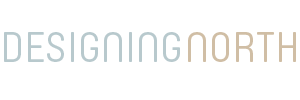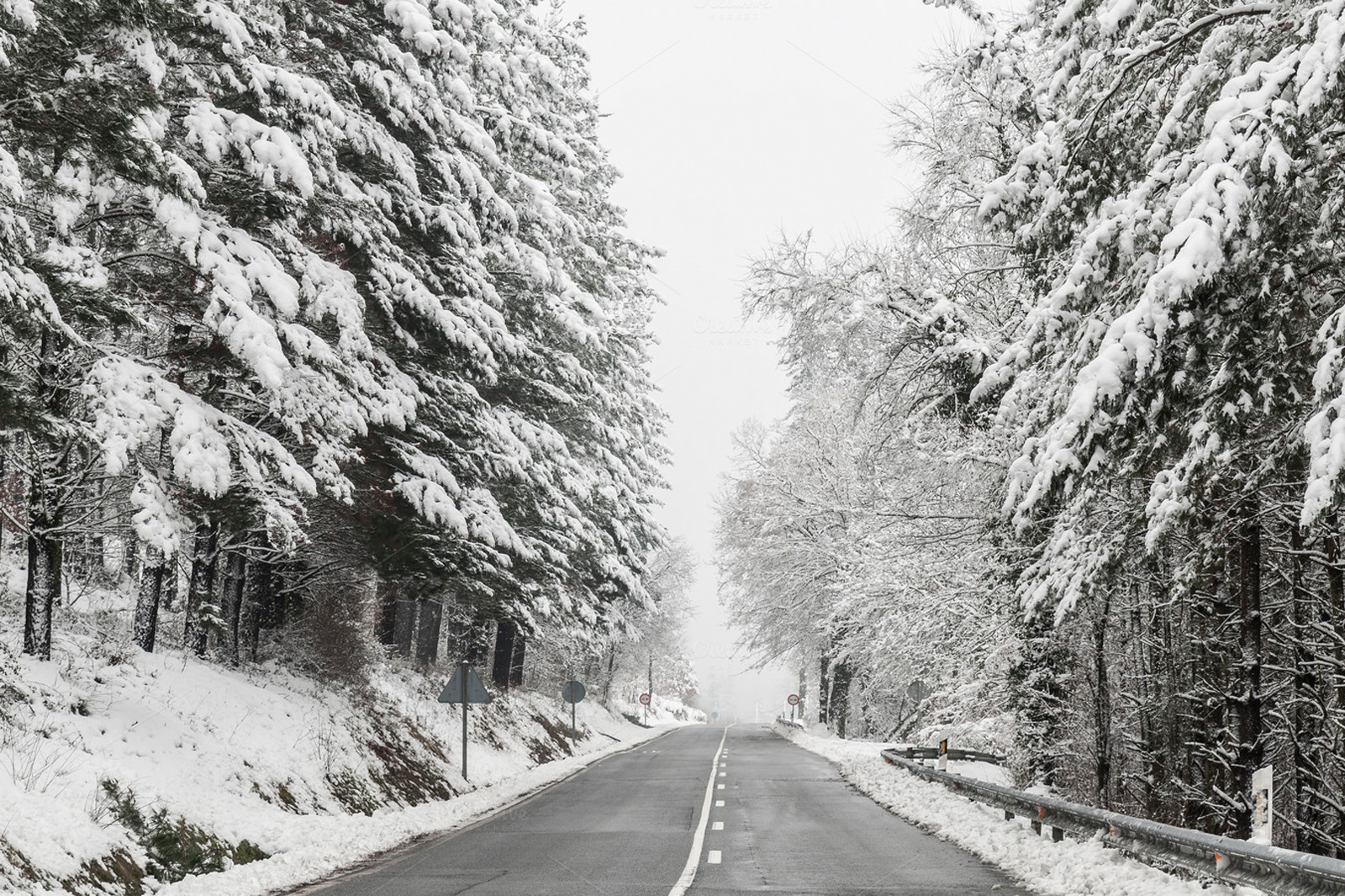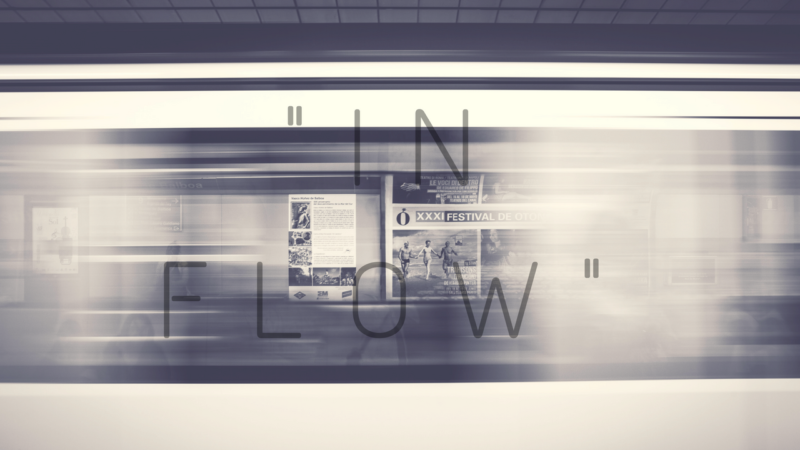What is flow? What does flow mean? And how on earth can flow be experienced? (Outside of the Progressive insurance commercials).
For the longest time, these questions lingered among the team at Designing North Studios as we navigated the sea of creativity and requirements each project demanded. But that was then. Now, with the guidance of our Executive Director, Lisa Peacock, our team has learned how to position our schedules to find our individual flow. And you can do the same: by following our lead!
Whether flow is a new term for you, or you simply haven’t had the time to explore it prior, we have some advice on where to start and how to access it again in the future.
To start, let’s cover the framework we use to understand what flow is, using this ‘pitch’ from Lisa:
I have to be ready to find flow. I don’t do this consciously, but if I analyze my behavior in retrospect – I get visually geared up to focus. So, focus and flow go hand-in-hand, with a need for focus before I can expect to feel “in the zone.
I need to first get control of my environment, this includes that everything around me is visually pleasing – which brings about a calming effect (that includes noise and movement as well) to create an internal organization of thought. Feeling the calm allows me to jump into the storm of flow where my immersion in whatever I’m doing goes unnoticed until I’m done with my work. That’s the funny thing about this concept, I never know I’m inflow until I’m on the other side of it. It’s like you’re asleep, and then you snap out of it! Being interrupted in flow is tantamount to being woken up suddenly in your sleep. Like my cat Dave Mason does at least once a week.
Flow Explained
As it relates to our psychology, flow is a state of deep concentration that causes time to “stand still” or “fly by” — figuratively speaking, of course. As it relates to our studio members, flow is a state of mind where our actions and cognitive thoughts progress with seamless transition, providing incredible satisfaction and enjoyment in what we are doing. And according to psychologist Mihaly Csikszentmihalyi, flow is a finely tuned sense of rhythm, involvement, and anticipation.
Finding flow during a project is a pinnacle moment in identifying what makes youtickas a creative. This sweet spot for concentration allows complete immersion into any activity, although we most often relate it to working. But much like working on your favorite projects, it indicates a correlation between happiness, interest, and performance. For example, if you love the outdoors and dislike confined spaces, flow likely won’t be experienced in an office cubicle (unless of course, your office is filled with puppers, friends, ping pong and catered lunches). So when you try and make sense of this concept, think of flow as a placewhere you go when it’s time to do your best work; be your best self; and connect with your calling. In short, when the opportunity presents itself, go with the flow.
Watch how one artist/athlete explains her perspective on flow:
You can’t force yourself to find flow, but you can:
- Clear your mind with a ritual that relaxes your thinking (monitor your routine and identify what works and what doesn’t). (For Lisa it’s a full coffee press and morning emails answered)
- Organize your day, every day — alleviate tension from the to-do list (Lisa uses 1 to-do app called Swipes — that goes back years: everything from current client project to-dos to buy paper towels to remodel the master bathroom. The ‘swipe’ to complete the ‘do’ is elation, but the pressure feels minimal.)
- Build a wall between distractions (i.e., put the phone away; use headphones and close your email!) (We all know if we don’t hear from Lisa right away, she’s not ignoring us, but rather in flow — which acts as a strong reminder to get there ourselves.)
- Identify your ideal setting — where do you work best? What do you need around you to feel at ease? (The overwhelming DN team ideal setting means animal close by, or a window setting that allows for ‘California Dreamin’)
- Practice with your attention span — reduce habitual media checking! (We’re on Slack for Teams and rely on each other to share anything really important in our #creative channel — good news being, it’s there when we’re ready to check it.)
- Record your moments of flow after the fact — analyze the situation and try replicating it. (During the research for this article, the DN team decided to create a #flow channel in Slack so that we could share what moves us in and out of our creative selves. #stuffworthsharing)
Common Side Effects of Flow
Most critical to a design profession, flow can increase artistic creativity.
When you are “in the moment” with strong focus and good energy the creative brain comes to life. With less thought capacity being consumed by stress and tension, you are left with more creative juices for self-expression and creative production. This is all according to science, of course.
Flow eliminates the suppression of ideas. You are sitting at your desk when a good idea, better yet, a great idea strikes. Your instinct is to tell someone but as you prepare your words doubt creeps in, and you eventually scrap the idea. Unfortunately, this happens often — way too often. And you know why? Because you weren’t in flow. When you are in the zone doing what you enjoy and experiencing satisfying results, doubt, fear, and uncertainty doesn’t stand a chance. In other words, your ideas are free to surface and come to life.
Flow can reveal your calling your ideal work. We have learned that finding flow often occurs during a stimulating or enjoyable activity. Be it work or play, there is enough interest and happiness involved to tune out everything else in the world, leaving room for complete focus. And so, every time flow is experienced, write it down with a description of what you were doing and where; make it a routine, you will likely begin to understand what you should be doing more of in work or life. This step is all about practice and repetition.
Flow positively affects your mood. As simple as it sounds, flow feels really good. Every time you come out of it you want to do it again, wishing that every day could be filled with these moments. When the brain is happy the heart is happy, therefore you are happy.
Flow can increase your performance. From designing a website to running a marathon, flow allows you to be at your best and do your best work. This concept is connected to focus, motivation, and drive; when you are motivated to do something (usually by a perceived reward), you focus on getting it done and are driven to do it well. It’s not just theory, if you learn about what you enjoy doing, you can do more of it, and do it well. But don’t just take our word for it. When you discover your flow, compare your performance on that task to one from a less memorable time; it won’t take long to “connect the dots.”
Flow motivates you to design your life. Designing your life isn’t easy. And deciding how and where to begin can be the hardest part. But finding your flow adds clarity to this process. In creating the life you want to live or the life you dream of living, you need to know what interests you, what you are good at, and what is most important to you — flow can answer all of these questions. Next time you are “in flow,” go with it, and take note of how you got there. These findings will point you in the direction your life needs to go in order to feel more happiness and create your purpose.
Flow makes you a more passionate person. Using artistic creativity, sharing good ideas, doing ideal work, being in a positive mood, achieving higher performance, and designing the life you want, in combination, help to make you a very passionate person. And passion can be applied to everything, not just work. When flow is influencing life in the most positive ways, all other aspects of life align — life is good.
The point is, all of these factors culminate to designing a better you, a you that has more to offer this world. A you that cares for the well-being of a community or team. A you that wants to not only see a brighter future for all, but is also willing to contribute a bit of extra effortto design the best life imaginable. And in return, you will live a life that hovers above the rest. At least that’s how we see it. Would you like to see our vision in action? Please, get in touch.



Comments ( 0 )